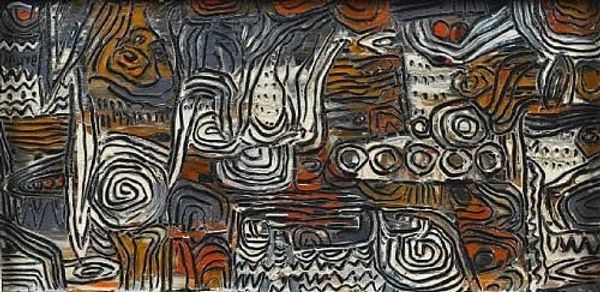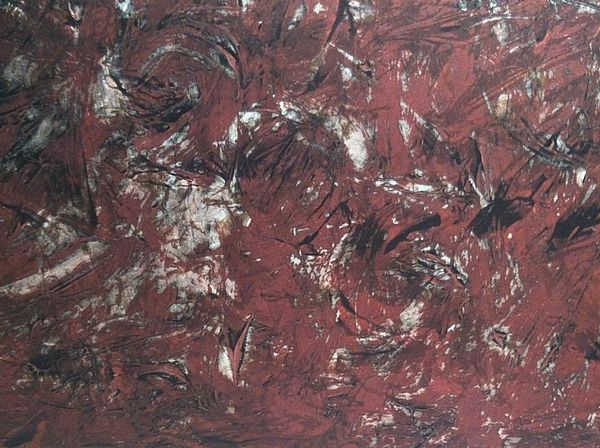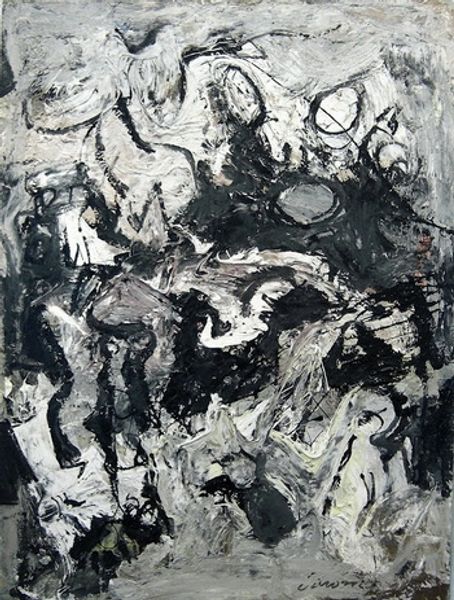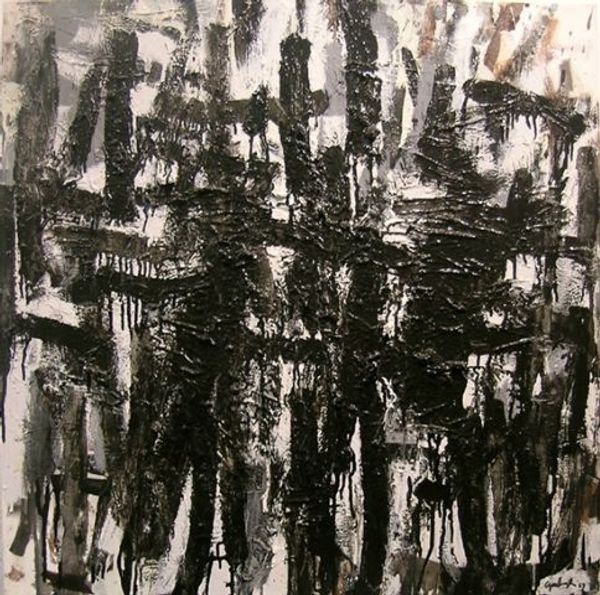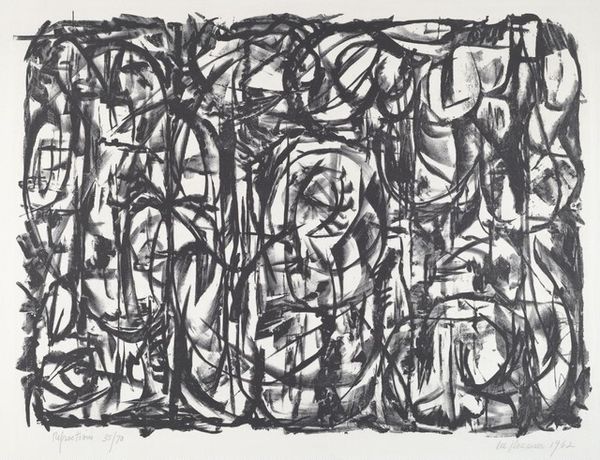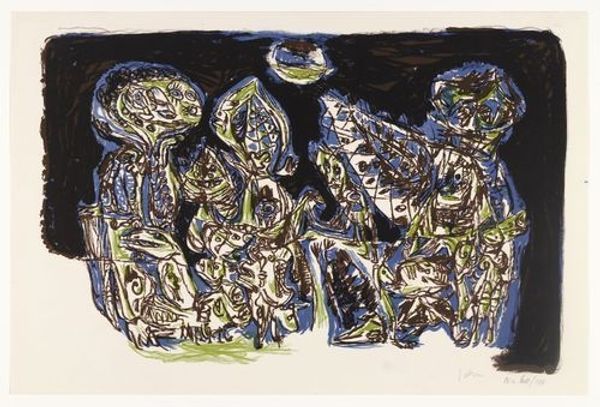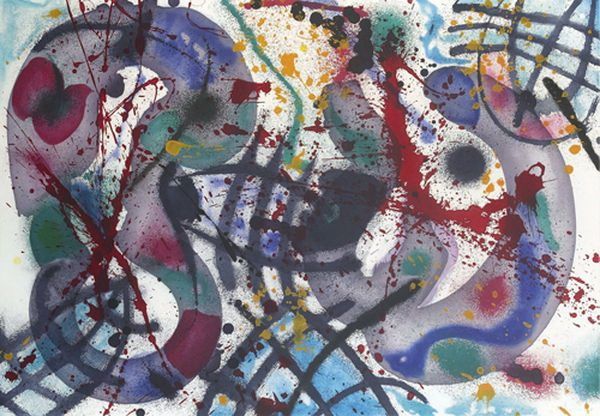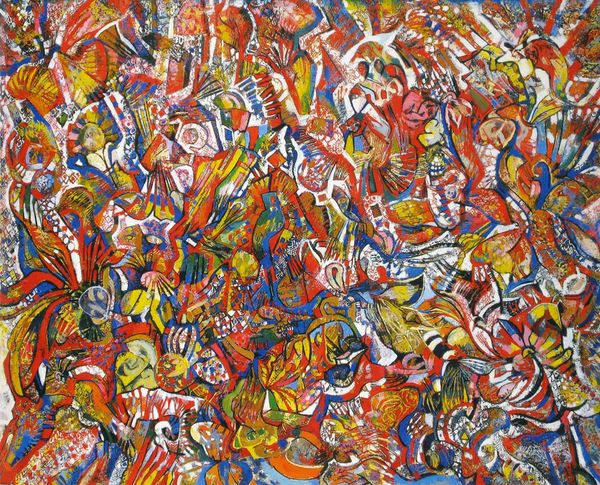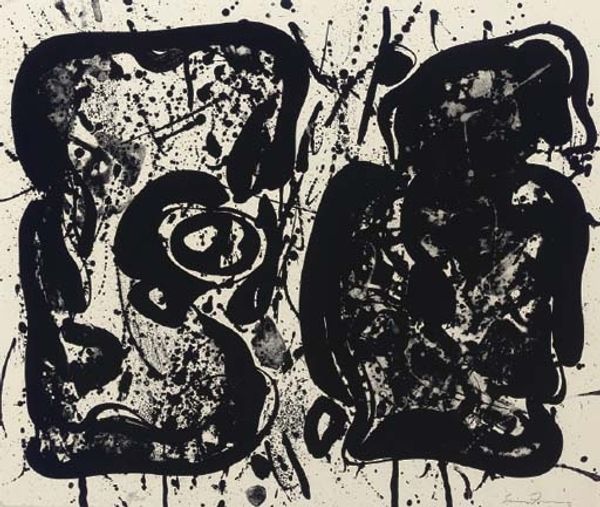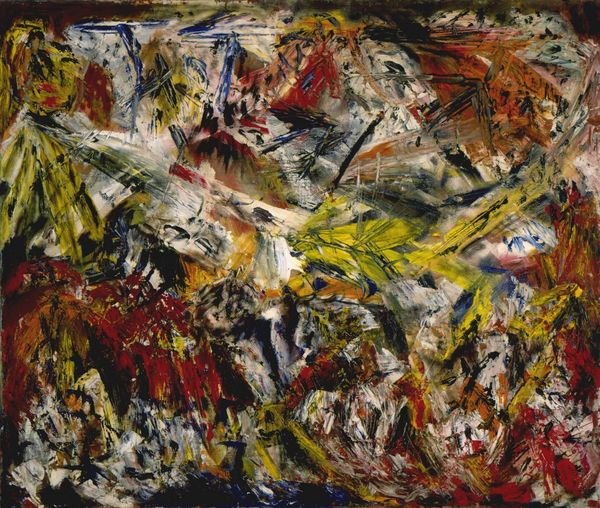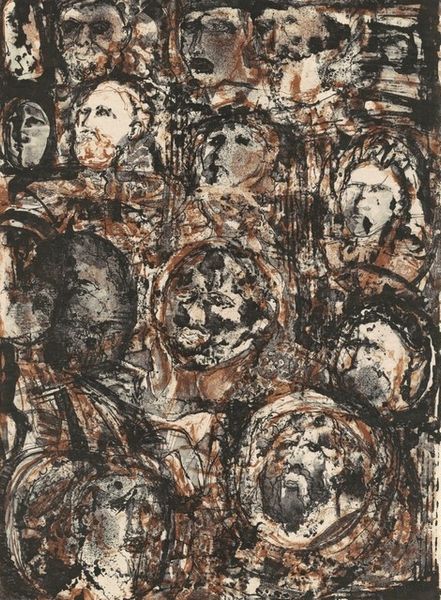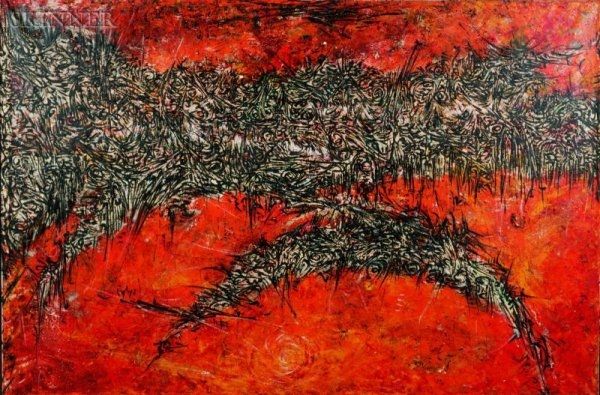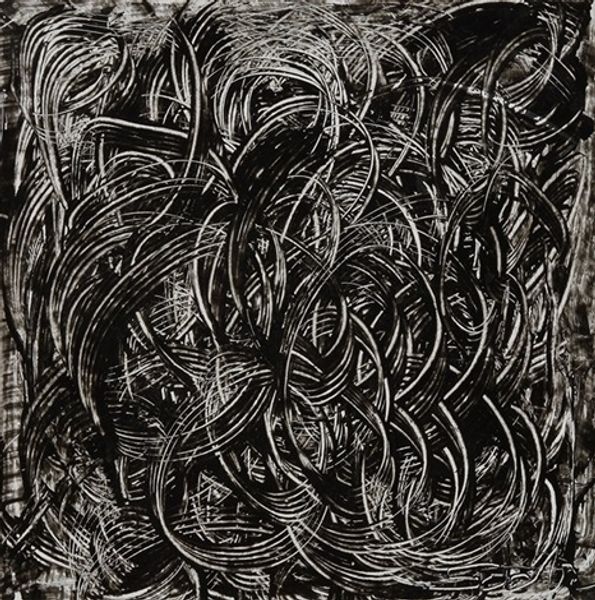
painting, acrylic-paint
#
abstract-expressionism
#
abstract expressionism
#
painting
#
acrylic-paint
#
form
#
abstraction
#
line
#
abstract art
Copyright: Lee Krasner,Fair Use
Editor: Here we have Lee Krasner's "Night Creatures," created in 1965 using acrylic paint. It’s quite intense—almost claustrophobic—with its swirling forms in stark black and white. What do you see in this piece, especially considering its historical context? Curator: This work speaks volumes about Krasner's struggle for recognition in a male-dominated art world and her perseverance after the death of her husband, Jackson Pollock. The monochrome palette and frenetic energy could be interpreted as a response to grief and the societal pressures she faced. Do you notice how the 'creatures' seem to be emerging from the darkness? Editor: Yes, definitely. They’re almost fighting for space on the canvas. Is it a commentary on the struggles faced by women? Curator: Absolutely. Krasner's work can be viewed through a feminist lens, highlighting the internal conflicts and external barriers faced by women artists. These 'night creatures' could symbolize suppressed emotions, anxieties, or even the artist's reclaiming of her own artistic identity. The use of abstraction allows her to express these themes without being overtly literal. How does the title affect your interpretation? Editor: It makes me think of hidden things, or perhaps parts of ourselves that we don't always acknowledge. It feels incredibly personal. Curator: Precisely. The title invites us to delve into the subconscious, connecting personal turmoil to broader social issues of identity and visibility. Understanding Krasner's biography enhances our appreciation of her work as a powerful statement of resilience and self-discovery. Editor: That makes so much sense. I never thought about the connection between her life and the chaotic feel of the painting itself. Thanks for sharing your insights! Curator: My pleasure. Looking at art through an intersectional lens allows us to understand not only the aesthetic choices, but also the socio-political undercurrents shaping the artist's vision.
Comments
No comments
Be the first to comment and join the conversation on the ultimate creative platform.
